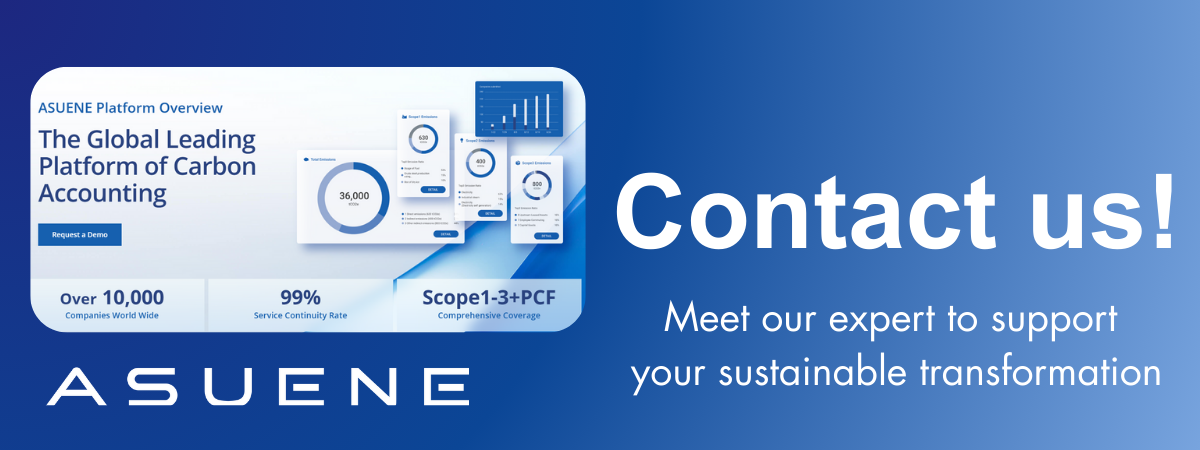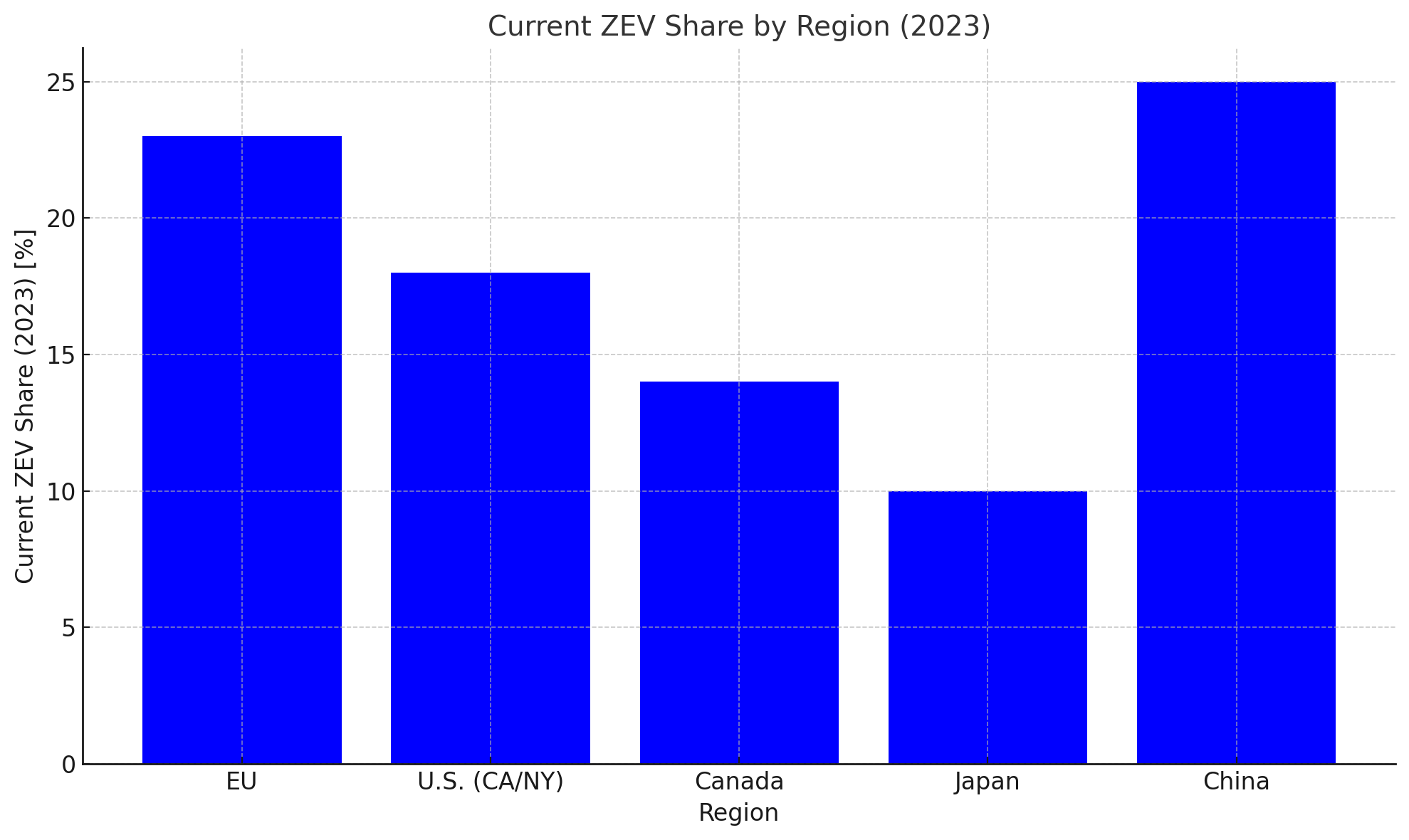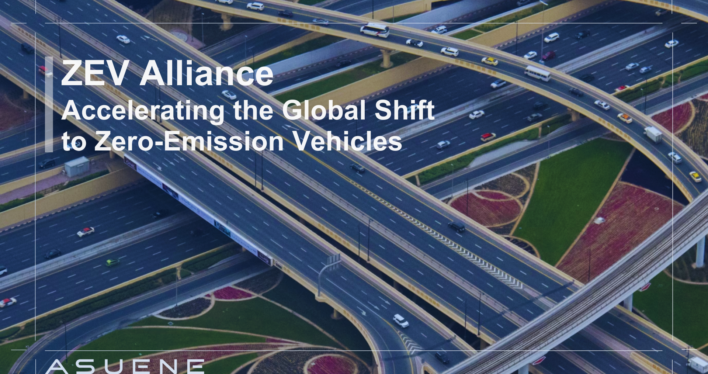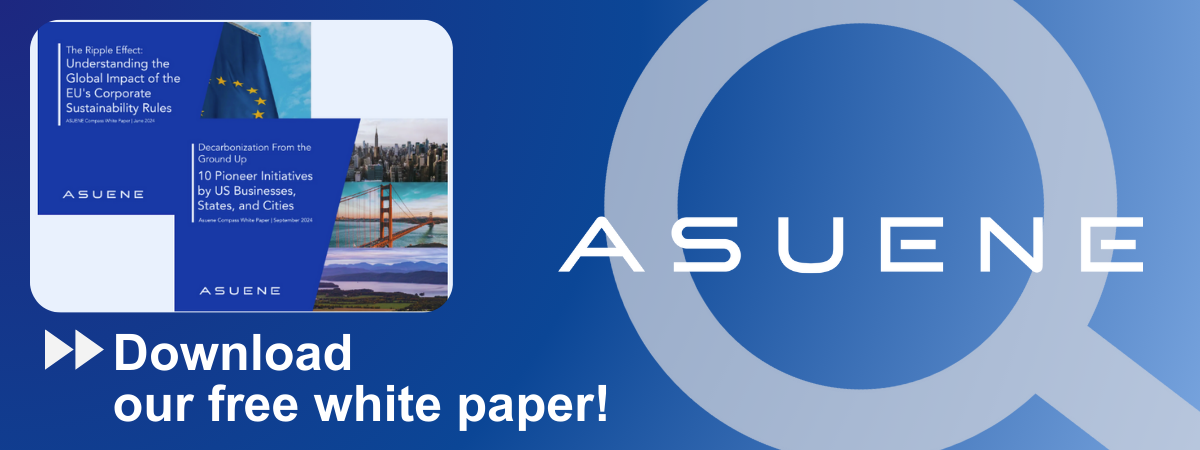- Article Summary
-
Background: Road Transport and Climate Imperatives
The global transport sector contributes nearly 24 percent of energy-related CO₂ emissions, with road vehicles accounting for over 70 percent of this total. Tackling emissions from passenger and freight vehicles is thus essential to any meaningful climate strategy.
Founded in 2015 at COP21, the Zero-Emission Vehicle Alliance (ZEV Alliance) is an international collaboration of governments committed to achieving 100 percent new zero-emission vehicle (ZEV) sales by no later than 2050, with many targeting 2035 or earlier. The initiative includes regions like the European Union, U.S. states (California, New York), Canada, Japan, and others, collectively representing over 50 percent of the global car market.
Purpose: What ZEV Alliance Aims to Achieve
ZEV Alliance members share a clear mission: to eliminate tailpipe emissions from light-duty vehicles (LDVs) and foster a just, clean transition to zero-emission transport.
Table: ZEV Alliance Goals and Principles
| Commitment Area | Objective |
|---|---|
| 100% ZEV new sales | By 2035 or 2050 depending on jurisdiction |
| Policy collaboration | Exchange best practices across nations and regions |
| Charging infrastructure | Expand public and private investment in EV charging |
| Equity and access | Ensure affordability and accessibility of ZEVs |
ZEVs include battery electric vehicles (BEVs), hydrogen fuel cell electric vehicles (FCEVs), and plug-in hybrids (PHEVs), though the emphasis is increasingly on full BEVs and FCEVs.

Mechanisms: How the ZEV Alliance Drives Electrification
The ZEV Alliance works through coordinated policy and stakeholder engagement.
Policy Exchange and Alignment
Members share data and technical research across governments and coordinate policy goals such as emissions standards and EV mandates.
Consumer and Industry Incentives
Policies include purchase subsidies, tax exemptions, and fleet transition programs for government and commercial vehicles.
Infrastructure Investment
This focuses on interoperable charging networks and harmonized regulations for EV charging hardware and data platforms.
Industrial Policy and Just Transition
The alliance supports auto industry retooling, worker reskilling, and the creation of local manufacturing hubs for batteries and EV components.
Current Status: Progress, Gaps, and Regional Leaders
Progress toward 100 percent ZEV sales varies widely among regions. As of 2024, the following table outlines the current landscape.
Table: ZEV Sales Share and Targets by Region

| Region | Current ZEV Share (2023) | Target Year for 100% New ZEVs | Notable Policy Tools |
|---|---|---|---|
| EU | ~23% | 2035 | Fit for 55, CO₂ fleet standards |
| U.S. (CA/NY) | ~18% (CA) | 2035 | Federal and state incentives |
| Canada | ~14% | 2035 | iZEV program, carbon pricing |
| Japan | ~10% | 2035 (hybrids included) | Eco-Car subsidies, OEM collaboration |
| China | ~25% | 2035 (NEV 100% target) | NEV credit system, infrastructure push |
Outlook and Business Implications: What Comes Next
Key trends expected between 2025 and 2035 include battery price parity by 2027 to 2030, global EV sales reaching 60 to 70 percent by 2035, and a peak in oil demand from passenger cars.
However, challenges remain, such as charging access in multifamily and rural areas, securing raw materials like lithium and cobalt, and ensuring a just transition for workers.
What Automakers and Supply Chain Actors Should Do Now
| Strategic Focus | Action Items |
|---|---|
| EV Model Development | Diversify offerings across price ranges and segments |
| Battery Supply Chain | Secure long-term mineral and cell supply contracts |
| Charging Strategy | Partner with utilities and charging networks |
| Circular Economy | Develop battery recycling and second-life programs |
| ESG Reporting | Include Scope 3 emissions and product carbon footprint |
Conclusion: A Zero-Emission Mobility Future Within Reach
The ZEV Alliance has created a platform for coordinated, ambitious, and science-based policymaking that is transforming the global auto industry. As governments, automakers, and consumers align around the ZEV future, momentum is building.
However, full realization of these goals will require faster infrastructure rollout, deeper industrial innovation, and strong social policies to ensure that the ZEV transition is inclusive, equitable, and resilient.
For both governments and businesses, the ZEV transition is no longer optional — it is inevitable. The only question is: who will lead it, and who will be left behind?
Why Work with ASUENE Inc.?
Asuene is a key player in carbon accounting, offering a comprehensive platform that measures, reduces, and reports emissions, including Scope 1-3, with expertise in decarbonization. Asuene serves over 10,000 clients worldwide, providing an all-in-one solution that integrates GHG accounting, ESG supply chain management, a Carbon Credit exchange platform, and third-party verification.
ASUENE supports companies in achieving net-zero goals through advanced technology, consulting services, and an extensive network.


